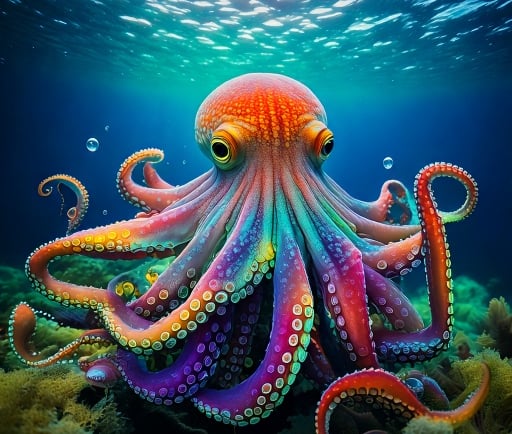The Rainbow Octopus of the Coral Triangle


Introduction to the Rainbow Octopus
The majestic rainbow octopus, known scientifically as the Octopus bocki, is a captivating creature native to the Coral Triangle. This region is recognized for its unparalleled marine biodiversity, making it a prime habitat for a variety of unique species. The rainbow octopus stands out not only for its vibrant colors but also for its intriguing behaviors that have fascinated marine biologists and ocean enthusiasts alike.
Habitat and Distribution
The Coral Triangle, stretching across the waters of Indonesia, Malaysia, the Philippines, Papua New Guinea, Solomon Islands, and Timor-Leste, serves as a haven for the rainbow octopus. The rich marine environment, characterized by coral reefs, mangroves, and seagrass beds, provides the optimal conditions for the survival and reproduction of this extraordinary species. The rainbow octopus is primarily found in shallow coastal waters, often hiding among rocks and coral crevices where it can hunt and evade predators.
Behavior and Adaptations
One of the most remarkable aspects of the rainbow octopus is its ability to change color and texture. This adaptation allows it to blend seamlessly with its surroundings, providing an effective defense mechanism against predators. Moreover, the rainbow octopus exhibits complex behaviors, including social interactions, mating rituals, and hunting techniques. Known for its intelligence, this octopus is capable of problem-solving and can use tools, a rarity among marine animals.
When it comes to feeding, the rainbow octopus primarily preys on crustaceans and small fish. Using its exceptional camouflage, the octopus can ambush its prey, ensnaring them with its long, flexible arms. Additionally, its beak-like mouth is equipped with a powerful jaw that allows it to break the shells of its favorite meals.
Conservation Status
Despite the rainbow octopus's remarkable resilience, environmental threats such as climate change, habitat destruction, and ocean pollution pose significant risks to its population. Efforts to protect the Coral Triangle and its inhabitants, including the rainbow octopus, are crucial for maintaining the biodiversity of this irreplaceable ecosystem. Various conservation initiatives aim to promote sustainable fishing practices and reduce ocean pollution in the region.
Conclusion
The rainbow octopus of the Coral Triangle is a true embodiment of the beauty and complexity of marine life. Its stunning appearance, coupled with its extraordinary behaviors, makes it a species worth studying and protecting. As we continue to explore the mysteries of the ocean, raising awareness about the importance of such unique creatures is essential for ensuring their survival and the health of their habitats.
